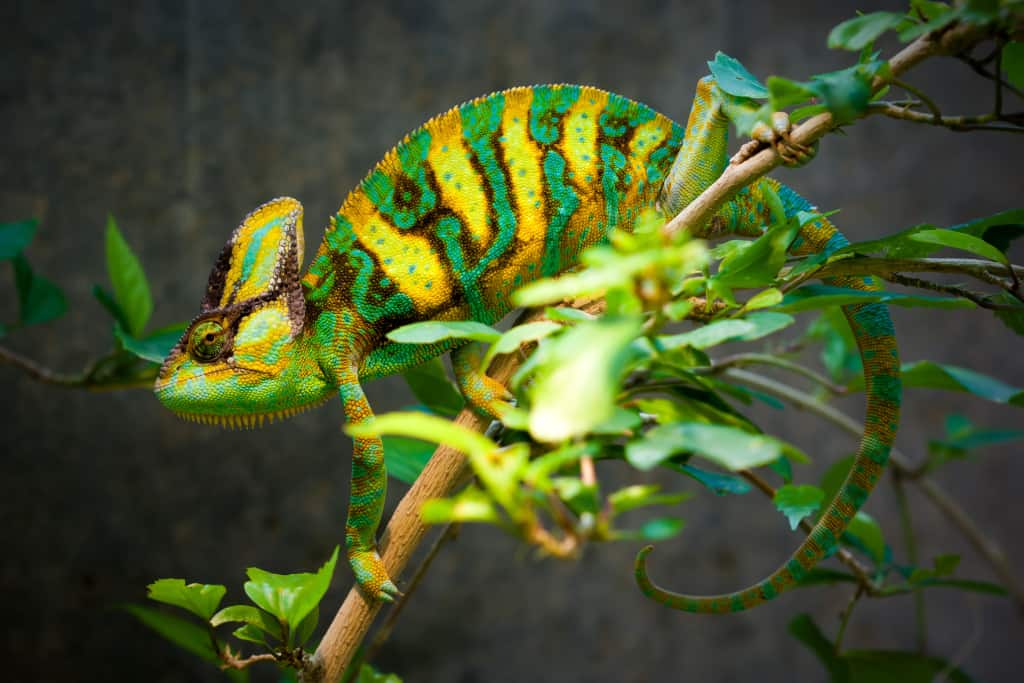
One of the most critical environmental factors you must maintain for your pet chameleon is the humidity level in its enclosure.
Chameleons come from tropical regions, and as such, they are used to living in environments with high humidity. In fact, they require a similar environment to stay healthy.
If the humidity level in their enclosure falls below the recommended range, they risk developing health problems, including incomplete shedding, digestion issues, and respiratory infections.
There are many ways you can raise the humidity level in your chameleon’s enclosure. So without further ado, let’s take a look at some of the most effective methods.
1. Increase Misting Schedule
One way you can raise the humidity level is, obviously, by increasing the frequency of misting.
Say, if you’re currently misting twice every day for 30 seconds, try misting three times a day for 60 seconds instead. And if you have an arid environment, you may even need to mist more than three times a day. So you’ll need to experiment a bit to see what works best for your particular situation.
I also recommend installing a misting system, as it will automate the process and make it much easier to keep the humidity level up. This is especially crucial if you have a busy schedule and can’t be around to mist as often as you’d like.
2. Use a Humidifier or Fogger
Another great way to raise the humidity level is by using a humidifier or fogger.
These reptile foggers are similar to misting systems, but they create a much finer fog that can help to raise the humidity level even higher.
You don’t necessarily need a humidifier or fogger, but if you’re struggling to keep the humidity level up, they can be a big help. And if you have a species of chameleon that requires high humidity, such as Panther chameleons, then a humidifier or fogger is practically a necessity.
I have both automatic mister and fogger in my chameleon’s enclosure, and I can tell you from experience that they make a world of difference.
3. Use Natural Substrates
While chameleons don’t really need natural substrates because they spend most of their time off the ground, you may still want to consider using one if you’re struggling with raising the humidity.
These natural substrates hold moisture well and can help boost the humidity level in your chameleon’s enclosure. That said, not all natural substrates are the same when it comes to moisture retention. My personal favorite is coco coir, like the Zoo Med Eco Earth. It is biodegradable, holds moisture well, and can last a long time, which makes it a great investment.
Other benefits of using natural substrates include making it easier for female chameleons to burrow and lay eggs and offering a more naturalistic and aesthetically-pleasing environment.
4. Use a Room Humidifier
If you live in an area with a particularly dry climate, then you may need to go one step further and use a room humidifier. Just add it to the room where your chameleon’s enclosure is located, and it will help to raise the humidity level in the entire room.
5. Consider a Glass/ Hybrid Cage
I know a lot of people in the chameleon community are against glass cages because they offer poor ventilation. But if you set it up correctly and ensure it has proper airflow and ventilation, a glass terrarium can be a great option as it holds humidity much better within the cage.
Still on the fence about using a glass terrarium? Why not consider a hybrid cage instead? These cages are made of both glass and screen and offer the best of both worlds. And the one I particularly like is the one made by ReptiZoo. It’s made of high-quality materials and allows you to switch between glass and screen side panels, depending on your chameleon’s needs.
Conclusion
By following these tips, you can easily raise the humidity level in your chameleon’s enclosure and create a healthy and comfortable environment for your chameleon. And remember to keep a close eye on humidity level and make adjustments as needed, as getting it right is crucial to your chameleon’s health.
